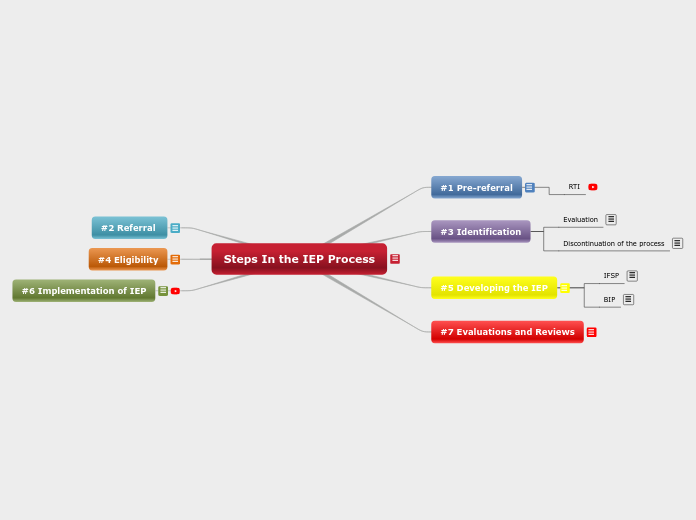Steps In the IEP Process
Resourceswww.education.com/references/articles/steps-ndividualized-education-plan/
#1 Pre-referral
During this time teachers try to determine the problem and will use different teaching approaches to see if the problem can be corrected by a change in instruction. The teacher will apply accomodations and use differentiated instruction to aide the student.
#3 Identification
Evaluation
Data is compiled to determine if the child has a qualifying disability. A professional (often a school psychologist) will look at medical history, information about social skills, behavior and educational performance to make his/her determination.
Discontinuation of the process
If it is determined that the child does not have a qualifying disability then the IEP process ends here.
#5 Developing the IEP
During this step parents and the IEP team make decisions about what placement, education, and services would benefit the child the most. Educational goals will be set for the student so they will begin to have more success in school.
IFSP
An IFSP (individualized family service plan) is an IEP developed for infants and toddlers.
BIP
A Behavioral Intervention Plan (BIP) will be developed at the same time as the IEP for any students with serious behavioral problems.
#7 Evaluations and Reviews
The IEP is reviewed every year to make sure the student is making adequate progress.
#2 Referral
Students who continue to struggle dispite changes in instruction, accomodations, and differentiation will be referred for testing.
#4 Eligibility
Information from step 3 is used to identify students who have a disability and qualify for special education.
#6 Implementation of IEP
The IEP now gives guidelines as to what is an appropriate education for the student, what accomodations he/she will receive, and any related services he/she will receive. The IEP will become effective immediately following the IEP meeting that will involve the parent/guardian, principal, psychologist, teachers, and any other interested parties.
